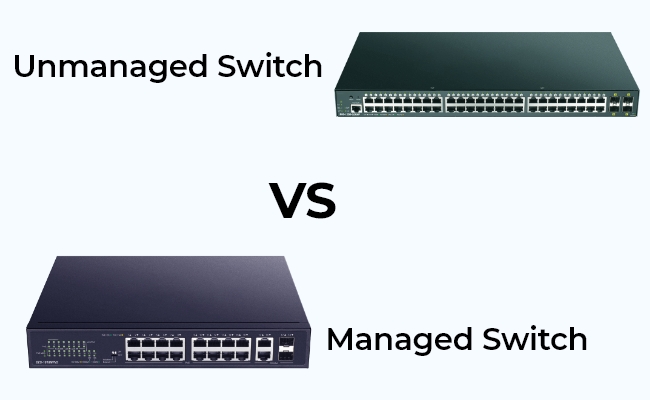In today’s fast-paced digital world, the performance and reliability of your network infrastructure are crucial. Understanding the distinction between a managed router and an unmanaged router is essential for making informed decisions about your network setup.
For more information on what is a managed router, you can visit this detailed guide.
Understanding Managed Routers
Managed routers offer advanced features and capabilities that allow for greater control and customization of your network. They are typically used in business environments where network performance, security, and scalability are top priorities.
Key Features of Managed Routers
- Advanced Security: Managed routers come with robust security features such as VPN support, firewalls, and intrusion detection systems. These features help protect the network from external threats and unauthorized access.
- Quality of Service (QoS): This feature allows network administrators to prioritize traffic, ensuring that critical applications receive the necessary bandwidth for optimal performance. QoS is particularly important in environments where multiple applications compete for bandwidth.
- Remote Management: Managed routers can be configured and monitored remotely, providing convenience and flexibility for network administrators. This feature is particularly useful for managing multiple sites or remote locations.
- Scalability: Managed routers are designed to grow with your network. They can easily be integrated with additional hardware and software to expand network capabilities as your business grows.
- Performance Monitoring: These routers offer detailed insights into network performance, allowing administrators to identify and resolve issues quickly. Performance monitoring helps in maintaining optimal network health and minimizing downtime.
Understanding Unmanaged Routers
Unmanaged routers, on the other hand, are simpler devices that provide basic connectivity without the advanced features of managed routers. They are typically used in small home networks or environments where advanced network management is not required.
Key Features of Unmanaged Routers
- Ease of Use: Unmanaged routers are plug-and-play devices that require minimal configuration. They are designed to be user-friendly and can be set up quickly without technical expertise.
- Cost-Effective: These routers are generally more affordable than managed routers, making them an attractive option for small businesses or home users with limited budgets.
- Basic Connectivity: Unmanaged routers provide the essential functionality needed to connect devices to a network. They support basic routing and switching capabilities but lack advanced features such as QoS and remote management.
- Limited Control: With unmanaged routers, users have limited control over network settings and performance. This lack of control can be a disadvantage in environments where network traffic needs to be managed or optimized.
Managed vs. Unmanaged Routers: A Comparative Analysis
Network Control and Customization
Managed routers offer extensive control and customization options, allowing network administrators to tailor the network to specific needs. Unmanaged routers, by contrast, offer minimal control, making them suitable for basic networking tasks but inadequate for more complex environments.
Security Features
The advanced security features of managed routers make them ideal for businesses that handle sensitive data or require a high level of network security. Unmanaged routers provide basic security features but may not be sufficient for environments with stringent security requirements.
Performance and Scalability
Managed routers excel in performance and scalability. They are designed to handle high traffic loads and can be easily upgraded as network demands increase. Unmanaged routers, while sufficient for small networks, may struggle to maintain performance in larger, more demanding environments.
Cost Considerations
While managed routers come with a higher price tag, their advanced features and capabilities justify the investment for businesses that need robust network management. Unmanaged routers are cost-effective and ideal for users with straightforward networking needs and limited budgets.
Ease of Use
Unmanaged routers are easy to set up and use, making them suitable for non-technical users. Managed routers, while offering greater functionality, require more technical expertise to configure and maintain.
Choosing the Right Router for Your Needs
When deciding between a managed and an unmanaged router, it is important to consider the specific requirements of your network. Here are some factors to take into account:
- Network Size and Complexity: For small networks with minimal traffic, an unmanaged router may suffice. However, for larger, more complex networks, a managed router is recommended.
- Security Requirements: If your network handles sensitive information or requires advanced security measures, a managed router is the better choice.
- Budget: Consider your budget and weigh the costs against the benefits of each type of router. Managed routers are more expensive but offer greater functionality and control.
- Technical Expertise: Assess the technical expertise available within your organization. Managed routers require more technical knowledge to configure and maintain.
- Future Growth: Consider the future growth of your network. Managed routers offer scalability and can grow with your business, whereas unmanaged routers may need to be replaced as network demands increase.
Conclusion
In summary, the choice between a managed router and an unmanaged router depends on your specific network needs, security requirements, budget, and technical expertise. Managed routers provide advanced features, security, and scalability, making them suitable for larger, more complex networks. Unmanaged routers offer basic connectivity and ease of use, ideal for smaller networks with straightforward needs.
For a deeper understanding of the differences between these types of routers, you can explore what is a managed router.





